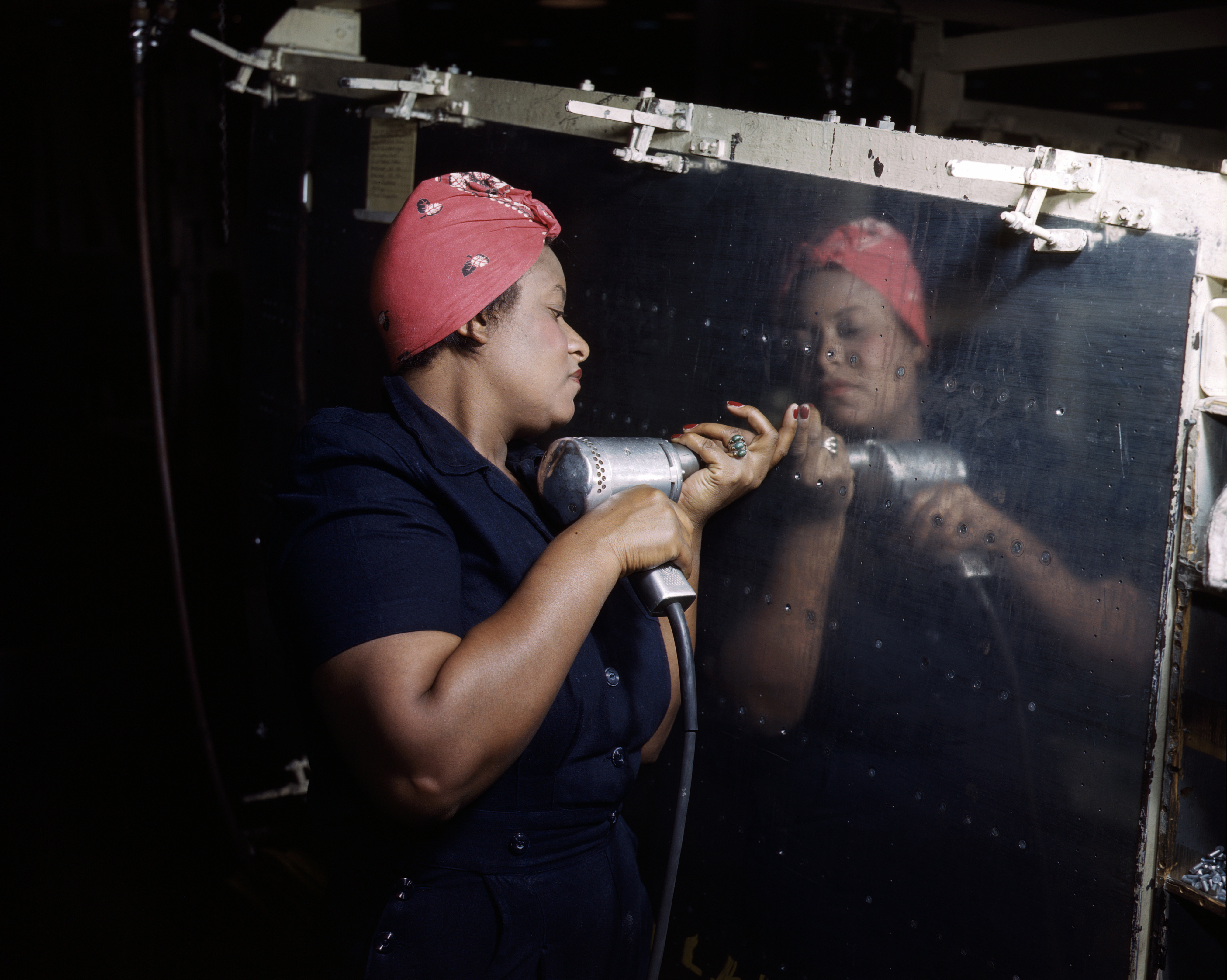Precipitous Fall of Women’s Employment
The benefits women received from World War II changes were short-lived, as many of them left voluntarily or were replaced by the men returning from the war (1). Less than 50% of those women who newly entered the workforce maintained those positions in 1950 (2). This is evidenced in the disproportionate departure of women from these new occupations, especially manufacturing (1). In order to fulfill this new role, many women had to forfeit the possibility of education and other futures to meet the needs of the mobilization efforts. Many women traded education for working jobs during hostilities, only to be replaced by the influx of males returning from the war (1).
Decrease in Educational Attainment & Wages Correlated with Level of Wartime Mobilization
There is evidence these women who entered into the workforce had a decreased educational attainment over time (Jaworski). This is because many of them left their schooling for paid work, only to have many of their jobs replaced by returning men (2). The seriousness of this education problem is demonstrated in the fact more than 60% of all working high-school-age women reported not being enrolled in school (1).
This educational impact also manifests itself long-term in lower wages, more hours worked, and fewer opportunities both in their nontraditional sectors, but also in those historically open to women (1). Those women with greater exposure to mobilization were more likely to be unemployed in 1960, had lower wages, and did not work fewer weeks than those exposed to less (1). In addition, the combination of brief participation in the labor force and lowered education limited the opportunities in sectors women previously had experience in, such as clerical work and sales.
However, research suggests this gap was eliminated by 1970. This is mostly attributed to the many females who left their schooling returned to gain an education in the late 1950s and 1960s, called the “quiet revolution” (3). Finishing their education did provide some benefits, showing positive effects on wages and job opportunities (2).
Higher Mobilization Correlated with Starting Families Sooner
This mobilization also had an effect on women’s choices in establishing a family. Those exposed to higher recruitment efforts are more likely to be married at a younger age and have more children (1).Fulfilling their traditional roles once again, research suggests women exposed to higher levels of mobilization were quicker to start families than those with less (1). Studies find that those who experienced greater mobilization were more likely to be married at a lower age and have a higher fertility than women less affected by wartime efforts (1).
References:
(1) Jaworski, Taylor. “’You’re in the Army Now:’ The Impact of World War II on Women’s Education, Work, and Family.” The Journal of Economic History Vol. 74, No. 1 (March 2014): 169 95. Accessed March 25, 2015. doi: 10.1017/S0022050714000060.
(2) Goldin, Claudia. “The Role of World War II in the Rise of Women’s Employment.” American Economic Review 81, no. 4 (1991): 741–56.
(3) Davis, Nancy J., and Larry L. Bumpass. “The Continuation of Education After Marriage Among Women in the United States: 1970.” Demography 13, no. 2 (1976): 161–74.

